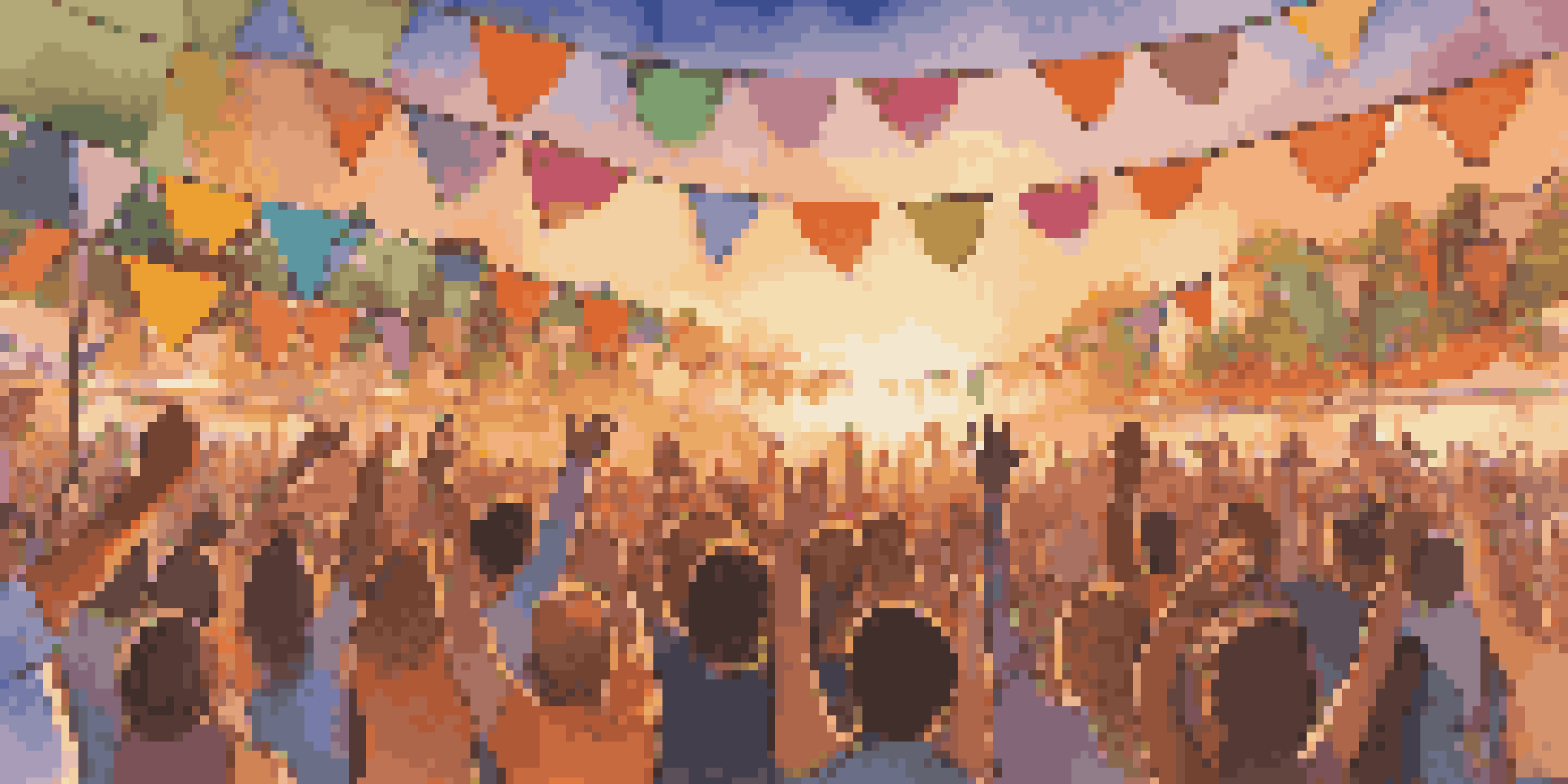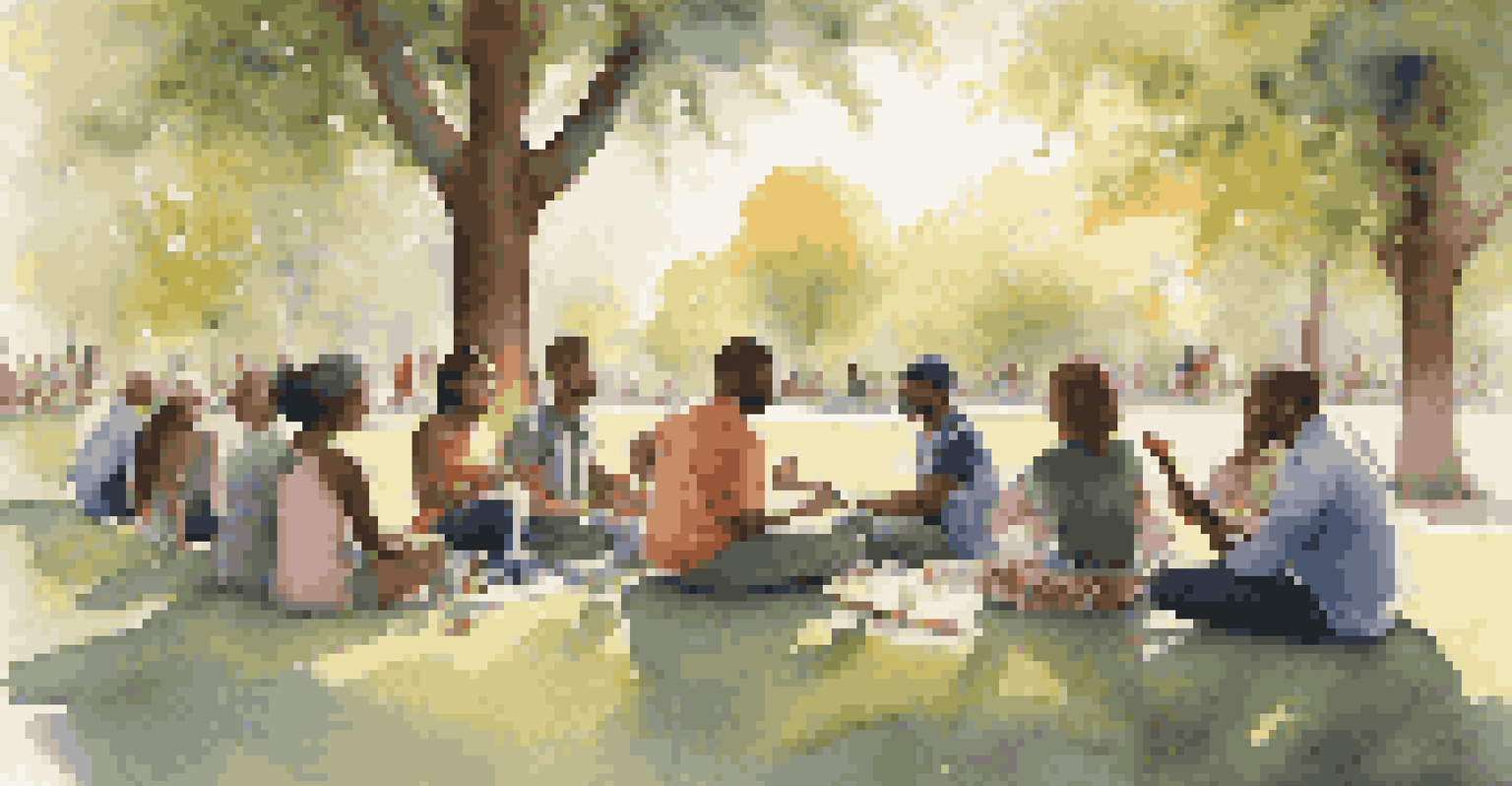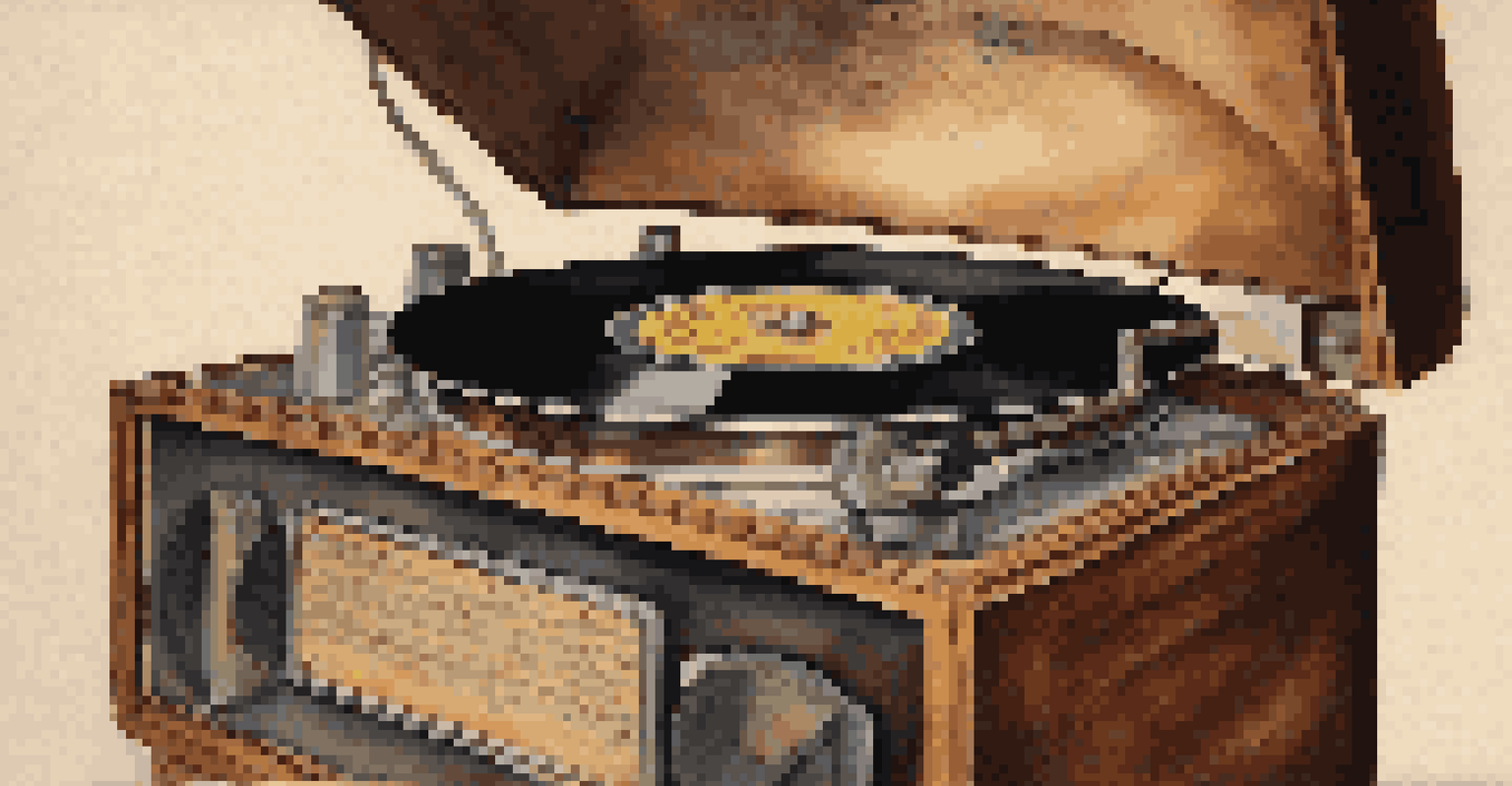Exploring the Role of Music in Nonviolent Resistance

Understanding Nonviolent Resistance and Its Impact
Nonviolent resistance is a powerful strategy used to enact social change without resorting to violence. It relies on peaceful protests, civil disobedience, and other forms of activism to challenge oppressive systems. This approach has been instrumental in numerous movements, from the Civil Rights Movement in the United States to the anti-apartheid struggle in South Africa.
Music can change the world because it can change people.
By fostering unity and resilience, nonviolent resistance empowers individuals to stand up for their rights while maintaining dignity. This practice often brings together diverse groups, creating a shared sense of purpose and community. As history shows, the impact of nonviolent movements can be profound, leading to significant political and social transformations.
One crucial element that enhances the effectiveness of nonviolent resistance is the strategic use of music. Music can stir emotions, convey messages, and unite people, making it an indispensable tool in these movements.
The Emotional Power of Music in Activism
Music has a unique ability to evoke emotions, making it a powerful weapon in the fight for justice. When people come together to sing or listen to music, they often feel a sense of solidarity and empowerment. This emotional connection can inspire individuals to take action, leading them to participate more actively in resistance efforts.

For instance, during the Civil Rights Movement, songs like 'We Shall Overcome' became anthems of hope and resilience. They not only resonated with the struggles of the time but also provided comfort and motivation to those fighting for equality. Such music transcends individual experiences, creating a collective identity among participants.
Power of Nonviolent Resistance
Nonviolent resistance unites individuals to challenge oppression through peaceful activism.
In this way, music can transform a simple protest into a memorable and impactful event. The shared experience of singing together can forge strong bonds and encourage individuals to stay committed to the cause.
Cultural Identity and Music in Resistance Movements
Music often serves as a reflection of cultural identity, which plays a crucial role in nonviolent resistance movements. By incorporating traditional songs and styles, activists can connect their struggles to their cultural heritage, fostering a sense of pride and belonging. This connection empowers communities and reinforces their determination to fight against oppression.
The power of music makes us more human.
For example, during the anti-apartheid movement in South Africa, music became a vital expression of resistance. Artists used their music to share stories of struggle, resilience, and hope, highlighting the plight of their people. This cultural resonance not only galvanized support but also attracted international attention to their cause.
Ultimately, music acts as a bridge between generations and communities, helping to preserve cultural identity while also serving as a rallying cry for change.
Music as a Tool for Communication and Messaging
In the realm of nonviolent resistance, music serves as a powerful medium for communicating messages of hope, justice, and solidarity. Lyrics often convey the struggles and aspirations of a movement, making complex issues more accessible to a wider audience. This simplicity can be crucial in mobilizing support and spreading awareness about the cause.
For instance, the protest song 'This Land Is Your Land' by Woody Guthrie became an anthem for many social movements, encapsulating the spirit of unity and shared ownership. Its straightforward lyrics and catchy melody made it easy for people to remember and sing along, reinforcing the movement's message.
Music's Role in Activism
Music serves as a powerful tool for communication, fostering emotional connections and inspiring collective action.
Moreover, music can transcend language barriers, making it a universal tool for expression. In a world where many may not fully understand the intricacies of a struggle, a powerful song can resonate deeply and inspire action.
The Role of Music Festivals in Activism
Music festivals have emerged as vital platforms for promoting social change and nonviolent resistance. These events gather diverse audiences, creating a unique space where activism and entertainment intersect. By featuring artists who advocate for social justice, festivals can amplify important messages while also fostering a sense of community among attendees.
For example, the Woodstock Festival of 1969 not only marked a significant moment in music history but also became synonymous with the anti-war movement. The spirit of peace and love resonated through performances, inspiring attendees to advocate for change beyond the festival grounds.
Such gatherings not only entertain but also educate and inspire action. They create a sense of belonging and camaraderie, reminding participants that they are part of something larger than themselves.
Historical Examples of Music in Nonviolent Movements
Throughout history, there are numerous examples of music playing a pivotal role in nonviolent resistance movements. From the American Civil Rights Movement to the Arab Spring, songs have united individuals and provided a voice to the voiceless. These historical instances showcase the enduring impact of music on social change.
For instance, during the Civil Rights Movement, artists like Nina Simone and Sam Cooke used their music to address racial injustice and inspire activism. Songs like 'A Change Is Gonna Come' became anthems for equality, resonating with those fighting for civil rights.
Cultural Identity Through Music
Incorporating cultural music in resistance movements reinforces community pride and strengthens the fight against oppression.
Similarly, during the Arab Spring, protesters used music to express their frustrations and hopes for a better future. Songs became a rallying point, energizing crowds and reinforcing their commitment to the cause. These examples highlight the profound connection between music and social movements.
The Future of Music in Nonviolent Resistance
As new social movements emerge, the role of music in nonviolent resistance continues to evolve. With advancements in technology and social media, artists can now reach broader audiences than ever before. This accessibility allows for a more significant exchange of ideas and experiences, fostering a global community of activists united by music.
For example, platforms like YouTube and Spotify enable artists to share their messages far and wide, reaching listeners across different cultures and backgrounds. This global reach can amplify local struggles and create a more extensive support network for those fighting for change.

Looking ahead, it's clear that music will remain a vital component of nonviolent resistance. As long as there are voices yearning for justice, music will continue to inspire, unite, and empower those committed to creating a better world.